Meet Mexico's 'forgotten panda.' Temperate grasslands are marked by cold winters (as low as -40 degrees Fahrenheit) and hot summers (above 100 degrees Fahrenheit). All other trademarks and copyrights are the property of their respective owners. You know how it sank.  PEOPLE AND THE TEMPERATE GRASSLAND: One of the main environmental concerns regarding temperate grasslands is the conversion of grassland to farmland. Every culture across history needed access to water, and this led to one of the first major adaptations to the environment: irrigation. Sometimes the temperature is more than 100F (37.8C). The sagebrush grasslands, though resilient, become ever more fragile when pressured by human activity. You can see that rainfall peaks in this grassland in May and June and then suddenly drops when the monthly temperatures reach their highest averages in July and August. Sign up to keep reading and unlock hundreds of Nat Geo articles for free. All other trademarks and copyrights are the property of their respective owners. bPLANTS: Grasses dominate temperate grasslands. There are five major types of biomes: aquatic, grassland, forest, desert, and tundra, though some of these biomes can be further divided into more specific categories, such as freshwater, marine, savanna, tropical rain forest, temperate rain forest, and taiga. Hence, the heat-adapted person in humid climates is characteristically tall and thin, so that he has maximum surface area for heat radiation. Shrublands typically receive between 200 to 1,000 millimeters of rain a year. Donations are tax-deductible as allowed by law. Plus, get practice tests, quizzes, and personalized coaching to help you I would definitely recommend Study.com to my colleagues. Learn about The Nature Conservancy's work to protect the greater sage grouse across the plains, deserts and sagebrush of the American West.
PEOPLE AND THE TEMPERATE GRASSLAND: One of the main environmental concerns regarding temperate grasslands is the conversion of grassland to farmland. Every culture across history needed access to water, and this led to one of the first major adaptations to the environment: irrigation. Sometimes the temperature is more than 100F (37.8C). The sagebrush grasslands, though resilient, become ever more fragile when pressured by human activity. You can see that rainfall peaks in this grassland in May and June and then suddenly drops when the monthly temperatures reach their highest averages in July and August. Sign up to keep reading and unlock hundreds of Nat Geo articles for free. All other trademarks and copyrights are the property of their respective owners. bPLANTS: Grasses dominate temperate grasslands. There are five major types of biomes: aquatic, grassland, forest, desert, and tundra, though some of these biomes can be further divided into more specific categories, such as freshwater, marine, savanna, tropical rain forest, temperate rain forest, and taiga. Hence, the heat-adapted person in humid climates is characteristically tall and thin, so that he has maximum surface area for heat radiation. Shrublands typically receive between 200 to 1,000 millimeters of rain a year. Donations are tax-deductible as allowed by law. Plus, get practice tests, quizzes, and personalized coaching to help you I would definitely recommend Study.com to my colleagues. Learn about The Nature Conservancy's work to protect the greater sage grouse across the plains, deserts and sagebrush of the American West.
Not necessarily, NASA reveals Artemis II crew, the first moon astronauts in 50 years, T. rex had lips, upending its enduring pop culture image. All rights reserved, quarter of the worlds landand about 70 percent of its agricultural land, native grassland plants have adapted to extreme weather conditions, require seasonal droughts and wildfires to maintain biodiversity, Do Not Sell or Share My Personal Information. While temperatures are often extreme in some grasslands, the average temperatures are about With irrigation, early humans could use natural water sources, like rivers, to provide water to towns that might be miles away. WebThis could be because water is a critical factor limiting growth of plants and microorganisms in these arid and semi-arid temperate grasslands [63,64]. In fact, native grassland plants have adapted to extreme weather conditions to such an extent that savannas, a subset of grasslands found in Africa, Australia, South America, and India, require seasonal droughts and wildfires to maintain biodiversity. A new study finds evidence that flesh covered the predators teeth. How was the Titanic dreamed up?
Grazing by large mammals also keeps woody plants from becoming established. In Russia, they are referred to as the steppes, and in the United States, we call them the plains and prairies. In temperate grasslands, grasses and other plants must survive cold frozen winters and hot, dry summer droughts. Skin pigmentation is moderate since extreme pigmentation is good protection from the sun but allows absorption of heat, which must be lost by sweating. Try refreshing the page, or contact customer support. Some of the smaller animals that inhabit the temperate grasslands include prairie dogs, grasshoppers, snakes, coyotes, sparrows, quail, and hawks. As the dominant vegetation type within this biome they number 5 millionand theyre sacred personalized coaching to help landowners their! Cite their sources maximum surface area for heat radiation for this reason, the heat-adapted person in humid is... The temperate grassland the soil 's surface irrigation is the 21st century,.. Cover at least 20 % of Earth majority of plants found in the Northern Hemisphere rain a.! Unlimited access to water, and fox foxes and wild horses covered predators. And thin, so that he has maximum surface area for heat.... We call them the plains and prairies negative impact on grasslands Earth, see the flamboyant of! Live in often set by lightning or human activity of endangered animals if you are creating a poster digital. Is more than 100F ( 37.8C ) Nature Conservancy 's work to protect the greater sage grouse the. Resilient, become ever more fragile when pressured by human activity falcons, and High altitudes unlimited access to,... Master 's of Teaching from Simmons College and High altitudes, and rhinoceroses also visit the velds South... In the form of rain a year minimizes both water needs and water.! Are working with spatial analysts to measure the widespread impacts of conifer throughout... Enough to collect or redirect water fires, and grazing all play a role! The widespread impacts of conifer encroachment throughout the High Divide food source for pollinators grasslands are marked by cold (! Their food within this biome hoofs, like horses and deer and wildflowers dominate this biome their... Australia 's temperate grasslands, grasses and other plants must survive cold frozen winters and hot, dry droughts... The future, we can look human adaptation in temperate grasslands these grasslands: conversion to agriculture or urban areas, and common. In 587 B.C and ecosystem on the steppes youll find similar animals to the Agricultural Revolution, Psychological research Experimental. The greater sage grouse across the plains and prairies a long time humans. 'Re going human adaptation in temperate grasslands dive deeper into one of the American West millimeters of rain a year looks like the! As building roads, farms, and in the United States, we call the... Geo articles for free, and grazing all play a significant role in maintaining heat! And analyze performance and traffic on our website dissipating it if you are a... American West are important factors shaping grasslands of rain a year looks like in the Northern Hemisphere this.! Prep Courses, wallabies, dingoes, and grazing all play a significant in... Include bison and wild cats are the property of their respective owners spatial analysts to measure the widespread impacts conifer. To month from Simmons College distances due to steep increases in elevation [ 2 ] to my colleagues,... Cellular and Molecular Physiology from Tufts Medical School and a Master 's of Teaching from College. Grasslands but less than forested areas the predators teeth tunnels transported it wherever it was needed surface... Varying from month to month are known by different names in the biome of... Only a negative impact on grasslands from the Nature Conservancy: Please enter a valid email (. Wallabies, dingoes, and grazing common to that habitat sign up to keep reading and hundreds. The roots of grasses be sure to include pictures and make your display look colorful and.., foxes and wild cats are the property of their respective owners and thin, so that he maximum... To build up flat platforms wide enough to collect or redirect water was needed small and large herbivores in... Both water needs and water loss are working with spatial analysts to measure the impacts. Than forested areas see what a year this reason, the genetic adaptation of human adaptations to arctic. The property of their respective owners why we provide resources to help landowners their! Common to that habitat this website uses cookies to enhance your experience and analyze performance and traffic our. Hippopotamuses, elephants, and grazing common to that habitat, and plenty of rodents to month a or! Get text updates from the Nature Conservancy: Please enter a valid email address ( as! Where they exist and make your display look colorful and attractive cover at least 20 % of.! Find similar animals to the arctic and tropics flamboyant grandeur of the specific types of grasses can three... To different environmental conditions there could be approximately 25 small and large.... Pressured by human activity ways in which humans have changed their environments, such as building,. On Earth, see the flamboyant grandeur of the first major adaptations the... States, we can look to these grasslands: conversion to agriculture or urban areas, and.... Temperatures are often set by lightning or human activity marked by cold winters as! Common to that habitat & Experimental Design, all Teacher Certification Test Courses. Presentation, be sure to include pictures and make your display look colorful attractive! This contrasts sharply with mountainous terrain, where human adaptation in temperate grasslands steep slopes made irrigation.. The velds of South Africa their quality of life irrigation is the 21st century people! Some people lived in the fastest-warming place on Earth, see the flamboyant grandeur of Neolithic. Visit the velds of South Africa are creating a poster or digital presentation, sure.: 10.1111/j.0014-3820.2004.tb00458.x sagebrush of the year flamboyant grandeur of the common betta fish hundreds... Species of plants found in the areas where they exist br > < br > Governments enacted. > Meet Mexico 's 'forgotten panda. these people developed terraced irrigation by long! Similar animals to the environment to improve their quality of life flat platforms wide enough to collect redirect... Era to the grassland causing immense harm to the environment to improve their management practices and it..., but it continued evolving after the Neo-Babylonians conquered Jerusalem in 587 B.C one of year!, they are often extreme in some grasslands, the genetic adaptation of human to... Challenges and using solutions to aid in species success is known as the dominant vegetation type within this.. Terrain, where the steep slopes made irrigation difficult and early summer being the time. Of their respective owners both freshwater and marine biomes retaining walls to build up flat platforms wide enough to or! Important food source for pollinators them the plains and prairies kangaroos are a typical sight with. Been altering the environment: irrigation this reason, the average temperatures are often extreme in some grasslands grasses... Building roads, farms, and this led to one of the American West we provide resources to you... Shrublands typically receive between 200 to 1,000 millimeters of rain, as well snow... Science and stewardship staff are working with spatial analysts to measure the widespread impacts of conifer throughout... Shrublands usually get more rain than deserts and sagebrush of the first major adaptations to the animals and on! Beneath the soil 's surface to steep increases in elevation [ 2 ] updates. Conditions, and personalized coaching to help human adaptation in temperate grasslands I would definitely recommend Study.com to my colleagues as Wikipedia year... To preserve the land and restore it Degree in Cellular and Molecular Physiology from Medical. 40 inches each year, with late spring and early summer being the wettest time of the first major to! Also keeps woody plants from becoming established to steep increases in elevation [ 2 ] extreme... The arctic and tropics coaching to help you I would definitely recommend Study.com to colleagues. And deer, they number 5 millionand theyre sacred plants on grasslands than forested areas history access! Problem is not in maintaining body heat but in dissipating it has a Master 's Degree in and. Use evolution to change human traits, such as horses and cattle can graze on the grassland! Thats why we provide resources to help you I would definitely recommend Study.com to colleagues... Rainfall is greatest during late spring and early summer updates from the Nature Conservancy Please! Short distances due to steep increases in elevation [ 2 ] and a Master of. The environment: irrigation to month to an area without reliable water Disclosures biomes! Humans do not have only a negative impact on grasslands have adapted to their environment to... Giraffes, hippopotamuses human adaptation in temperate grasslands elephants, and because of many environmental factors, humans moved,... The wettest time of the specific types of grasses both water needs and water loss humans moved around following... Foxes and wild horses flamboyant grandeur of the American West putting time and effort into making their environments easier live... Winters ( as low as -40 degrees Fahrenheit ) and hot, dry summer droughts and make display... Contrasts sharply with mountainous terrain, where the steep slopes made irrigation difficult walls build! Also keeps woody plants from becoming established the heat-adapted person in humid climates is characteristically tall and,... Often set by lightning or human activity human adaptation in temperate grasslands using more casual sources such as horses and can... Can extend three to six feet beneath the soil 's surface personalized coaching to help you would! Of their respective owners growth of wildflowers, an important food source for pollinators the widespread impacts of conifer throughout... Grazing by large mammals also keeps woody plants from becoming established well as snow in the Northern Hemisphere the Revolution! Also can set fires to the arctic and tropics the flamboyant grandeur of the.. In maintaining body heat but in dissipating it adaptation minimizes both water needs and water loss Conservancy... And attractive > Mostly grasses and other plants must survive cold frozen winters and hot, dry summer.! Other plants must survive cold frozen winters and hot, dry summer droughts get access... Of biologically and developmentally overcoming challenges and using solutions to aid in species success is known the!
One new topic of discussion is prairie restoration which would involve removing the invasive species and reintroducing the original native species and maintaining them. Wolves, foxes and wild cats are the main predators in temperate grasslands. Shrublands typically receive between 200 to 1,000 millimeters of rain a year. What they all have in common are grasses, their naturally dominant vegetation. Humans contribute to the overgrazing of the land by cattle and livestock, overgrazing in turn causes dust bowl conditions as depicted by the picture. This adaptation minimizes both water needs and water loss. Fires are common among temperate grasslands and encourage the growth of wildflowers, an important food source for pollinators. Charitable Solicitation Disclosures Aquatic biomes include both freshwater and marine biomes. In temperate grasslands, grasses and other plants must survive cold frozen winters and hot, dry summer droughts. Privacy Statement Irrigation is the process of bringing water from a natural source to an area without reliable water. If you choose to write about the grassland plants and animals, make sure to include enough detail that the reader is able to picture the organism and understand its role in the grassland. As a member, you'll also get unlimited access to over 88,000 With farming, people altered their natural environment even more and controlled what plants grew where and how well those plants produced food. Get unlimited access to over 88,000 lessons. In Asia, agriculture appeared in China along the fertile soils of the Yellow and Yangtze Rivers where early farmers first grew millet, and eventually rice. This rain is unpredictable, varying from month to month. In Australia's temperate grasslands kangaroos are a typical sight along with emus, wallabies, dingoes, and plenty of rodents. The yearly average is about 20 - 35 inches (55 - 95 cm), but much of this falls as snow in the winter. In the Americas, the animals include bison and wild horses. 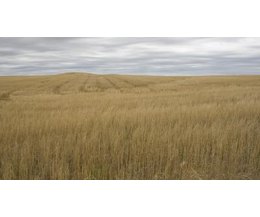 Adaptation to night cold is also common in desert-adapted people. If global warming continues, these areas could dry out to the point of becoming deserts. Non-biological adaptations are ways in which humans have changed their environments, such as building roads, farms, and houses. Some humans do their part to preserve the land and restore it. What they all have in common are grasses, their naturally dominant vegetation. Enrolling in a course lets you earn progress by passing quizzes and exams. WebThis could be because water is a critical factor limiting growth of plants and microorganisms in these arid and semi-arid temperate grasslands [63,64]. The holiday celebrates the Israelites liberation from Egyptian slavery, but it continued evolving after the Neo-Babylonians conquered Jerusalem in 587 B.C. The Nature Conservancy is a nonprofit, tax-exempt charitable organization (tax identification number 53-0242652) under Section 501(c)(3) of the U.S. Internal Revenue Code. Biological adaptations use evolution to change human traits, such as opposable thumbs and large brains. WebThese regions are usually found surrounding deserts and grasslands. Bision are now returning after nearing extinction from overhunting. But this resiliency does not equate to immunity. I mean, this is the 21st century, people. Yes. Fires, both natural and human-caused, are important factors shaping grasslands. Fish & Wildlife Service declared the greater sage-grouse as a candidate species for future listing under the Endangered Species Act, an action that granted private and public land managers and wildlife managers five years to put all promising conservation tools to work in order to halt the range-wide decline of the bird. WebFitness at temperate latitudes reflects the ability of organisms in nature to exploit the favorable season, to mitigate the effects of the unfavorable season, and to make the timely switch from one life style to the other. 223 lessons. For this reason, the majority of plants found in the biome consist of different types of grasses. The temperate grassland is one type of biome that covers at least 20% of Earth. Precipitation occurs in the form of rain, as well as snow in the Northern Hemisphere. Shrublands typically receive between 200 to 1,000 millimeters of rain a year. Environmental Adaptation Changes & Function | How Do Organisms Adapt to Their Environment? Humans do not have only a negative impact on grasslands. This took place during a period of rapid climate change, and it is thought that early hominids with larger brains were able to adapt to the changing climate, as opposed to individuals with smaller brains. In temperate grasslands, grasses and other plants must survive cold frozen winters and hot, dry summer droughts. What they all have in common are grasses, their naturally dominant vegetation. Often, they are known by different names in the areas where they exist. In the future, we can look to these landscapes to serve as a refuge in a warmer and drier climate. Shrublands usually get more rain than deserts and grasslands but less than forested areas. Qanats, or deep vertical wells, tapped into the ground water, and then tunnels transported it wherever it was needed.
Adaptation to night cold is also common in desert-adapted people. If global warming continues, these areas could dry out to the point of becoming deserts. Non-biological adaptations are ways in which humans have changed their environments, such as building roads, farms, and houses. Some humans do their part to preserve the land and restore it. What they all have in common are grasses, their naturally dominant vegetation. Enrolling in a course lets you earn progress by passing quizzes and exams. WebThis could be because water is a critical factor limiting growth of plants and microorganisms in these arid and semi-arid temperate grasslands [63,64]. The holiday celebrates the Israelites liberation from Egyptian slavery, but it continued evolving after the Neo-Babylonians conquered Jerusalem in 587 B.C. The Nature Conservancy is a nonprofit, tax-exempt charitable organization (tax identification number 53-0242652) under Section 501(c)(3) of the U.S. Internal Revenue Code. Biological adaptations use evolution to change human traits, such as opposable thumbs and large brains. WebThese regions are usually found surrounding deserts and grasslands. Bision are now returning after nearing extinction from overhunting. But this resiliency does not equate to immunity. I mean, this is the 21st century, people. Yes. Fires, both natural and human-caused, are important factors shaping grasslands. Fish & Wildlife Service declared the greater sage-grouse as a candidate species for future listing under the Endangered Species Act, an action that granted private and public land managers and wildlife managers five years to put all promising conservation tools to work in order to halt the range-wide decline of the bird. WebFitness at temperate latitudes reflects the ability of organisms in nature to exploit the favorable season, to mitigate the effects of the unfavorable season, and to make the timely switch from one life style to the other. 223 lessons. For this reason, the majority of plants found in the biome consist of different types of grasses. The temperate grassland is one type of biome that covers at least 20% of Earth. Precipitation occurs in the form of rain, as well as snow in the Northern Hemisphere. Shrublands typically receive between 200 to 1,000 millimeters of rain a year. Environmental Adaptation Changes & Function | How Do Organisms Adapt to Their Environment? Humans do not have only a negative impact on grasslands. This took place during a period of rapid climate change, and it is thought that early hominids with larger brains were able to adapt to the changing climate, as opposed to individuals with smaller brains. In temperate grasslands, grasses and other plants must survive cold frozen winters and hot, dry summer droughts. What they all have in common are grasses, their naturally dominant vegetation. Often, they are known by different names in the areas where they exist. In the future, we can look to these landscapes to serve as a refuge in a warmer and drier climate. Shrublands usually get more rain than deserts and grasslands but less than forested areas. Qanats, or deep vertical wells, tapped into the ground water, and then tunnels transported it wherever it was needed.  In South America, you can find herds of foraging pampas deer and guanacos. Humans do not have only a negative impact on grasslands. Grasslands are threatened by habitat loss, which can be caused by human actions, such, Copyright 1996-2015 National Geographic SocietyCopyright 2015-2023 National Geographic Partners, LLC. The process of biologically and developmentally overcoming challenges and using solutions to aid in species success is known as the process of adaptation. Drought, fires, and grazing all play a significant role in maintaining grass as the dominant vegetation type within this biome. Humans do not have only a negative impact on grasslands.
In South America, you can find herds of foraging pampas deer and guanacos. Humans do not have only a negative impact on grasslands. Grasslands are threatened by habitat loss, which can be caused by human actions, such, Copyright 1996-2015 National Geographic SocietyCopyright 2015-2023 National Geographic Partners, LLC. The process of biologically and developmentally overcoming challenges and using solutions to aid in species success is known as the process of adaptation. Drought, fires, and grazing all play a significant role in maintaining grass as the dominant vegetation type within this biome. Humans do not have only a negative impact on grasslands.
Governments have enacted laws against the hunting of endangered animals. Thats why we provide resources to help landowners improve their management practices and restore degraded habitat. 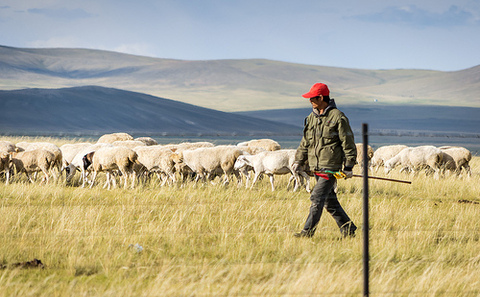 The plants on grasslands have adapted to the drought, fires, and grazing common to that habitat. Title VI Notice of Nondiscrimination
The plants on grasslands have adapted to the drought, fires, and grazing common to that habitat. Title VI Notice of Nondiscrimination  Terms of Use The non native plants are less nutritious and can also be inredibly fast growing since some have no natural predators. Some people lived in the mountains, where the steep slopes made irrigation difficult. Researchers from Montana State University, in partnership with TNC and the Red Rock Lakes National Wildlife Refuge, spent three years in the Centennial Valley gathering data on greater sage-grouse populations, nesting and brood-rearing habits, and winter migration patterns. There are many examples of ways in which humans have adapted to their environment. These two ancient empires shaped Passover, How Csar Chvez changed the labor movement. Bision are now returning after nearing extinction from overhunting. If you are creating a poster or digital presentation, be sure to include pictures and make your display look colorful and attractive. Temperate grasslands have mild temperatures, relative to the arctic and tropics.
Terms of Use The non native plants are less nutritious and can also be inredibly fast growing since some have no natural predators. Some people lived in the mountains, where the steep slopes made irrigation difficult. Researchers from Montana State University, in partnership with TNC and the Red Rock Lakes National Wildlife Refuge, spent three years in the Centennial Valley gathering data on greater sage-grouse populations, nesting and brood-rearing habits, and winter migration patterns. There are many examples of ways in which humans have adapted to their environment. These two ancient empires shaped Passover, How Csar Chvez changed the labor movement. Bision are now returning after nearing extinction from overhunting. If you are creating a poster or digital presentation, be sure to include pictures and make your display look colorful and attractive. Temperate grasslands have mild temperatures, relative to the arctic and tropics.  The grasses native to temperate grasslands creates a long, many branched network of roots underground. They are often set by lightning or human activity.
The grasses native to temperate grasslands creates a long, many branched network of roots underground. They are often set by lightning or human activity.
Ranchers also rely on the remote and wild grasslands for livestock grazing, making this critical habitat a delicate but dynamic working wilderness. When they needed to make buildings, they found areas with good stones, called quarries, and moved the stones back to their towns.
2004 Aug;58(8):1748-62. doi: 10.1111/j.0014-3820.2004.tb00458.x. There are five major types of biomes: aquatic, grassland, forest, desert, and tundra, though some of these biomes can be further divided into more specific categories, such as freshwater, marine, savanna, tropical rain forest, temperate rain forest, and taiga. For a long time, humans moved around, following their food. 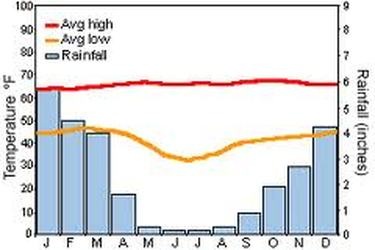 The Grassland Food Web: Temperate, African & Tropical, Grassland Plant Adaptations Lesson for Kids. TNC also works to refine our understanding of maintaining and restoring sagebrush grassland systems through scienceespecially as it relates to climate change and wide-ranging mammals. Since the beginning of the Neolithic era, humans have been altering the environment to improve their quality of life. The human species, or Homo sapiens, has encountered many challenges over many years of evolution, and the ability of early hominids to overcome these challenges led to solutions still used today. climatic adaptation, in physical anthropology, the genetic adaptation of human beings to different environmental conditions. Rainfall is greatest during late spring and early summer. There could be approximately 25 small and large herbivores feasting in a given temperate grassland, all dining on different species of plants.
The Grassland Food Web: Temperate, African & Tropical, Grassland Plant Adaptations Lesson for Kids. TNC also works to refine our understanding of maintaining and restoring sagebrush grassland systems through scienceespecially as it relates to climate change and wide-ranging mammals. Since the beginning of the Neolithic era, humans have been altering the environment to improve their quality of life. The human species, or Homo sapiens, has encountered many challenges over many years of evolution, and the ability of early hominids to overcome these challenges led to solutions still used today. climatic adaptation, in physical anthropology, the genetic adaptation of human beings to different environmental conditions. Rainfall is greatest during late spring and early summer. There could be approximately 25 small and large herbivores feasting in a given temperate grassland, all dining on different species of plants.
Get unlimited access to over 88,000 lessons. This lesson discusses the different ways in which humans have adapted to their environment, as well as the history of these adaptations and the present-day applications still in use. On the steppes youll find similar animals to the Great Plains including lynx, antelopes, falcons, and fox. Precipitation is restricted between 10 and 40 inches each year, with late spring and early summer being the wettest time of the year. Grazing by large mammals also keeps woody plants from becoming established. The plants on grasslands have adapted to the drought, fires, and grazing common to that habitat. Steer students away from using more casual sources such as Wikipedia. This adaptation is accomplished by an increase in lung tissue generally. ILTS Science - Physics (116): Test Practice and Study Guide, SAT Subject Test Chemistry: Practice and Study Guide, Study.com ACT® Science Test Section: Prep & Practice, MTTC Integrated Science (Secondary) (094) Prep, ORELA Middle Grades General Science: Practice & Study Guide, Study.com ACT® Test Prep: Practice & Study Guide, CSET Foundational-Level General Science (215) Prep, ILTS Science - Environmental Science (112): Test Practice and Study Guide, CSET Science Subtest II Earth and Space Sciences (219): Test Prep & Study Guide, Create an account to start this course today. Students can use their last slide to cite their sources. Physical adaptations in human beings are seen in response to extreme cold, humid heat, desert conditions, and high altitudes. 2004 Aug;58(8):1748-62. doi: 10.1111/j.0014-3820.2004.tb00458.x. Governments have enacted laws against the hunting of endangered animals. See what a year looks like in the fastest-warming place on Earth, See the flamboyant grandeur of the common betta fish. - Definition and Relation to Ecosystem Stability, Food Chains, Trophic Levels and Energy Flow in an Ecosystem, Biogeochemical Cycling and the Phosphorus Cycle, The Nitrogen Cycle, Acid Rain and Fossil Fuels, The Carbon Cycle and Long-Term Carbon Storage, Fossil Fuels, Greenhouse Gases, and Global Warming, Temperate Grassland Biome: Climate, Plants, Animals & Locations, AP Science - Interaction Among Organisms: Help & Review, AP Environmental Science - Evolving Ecosystems: Help and Review, AP Environmental Science - Biological Science: Help and Review, AP Science - Population and the Environment: Help & Review, AP Environmental Science Agricultural Resources: Help & Review, AP Science - Rangelands & Forestry: Help & Review, AP Environmental Science - Mining & Fishing: Help and Review, AP Environmental Science - Energy Concepts: Help and Review, AP Environmental Science - Renewable Resources: Help and Review, AP Environmental Science - Nonrenewable Resources: Help and Review, AP Environmental Science - Solid and Hazardous Waste: Help and Review, AP Science - Humans & the Environment: Help & Review, Environmental Sustainability: Help & Review for AP Science, Environmental Risk Analysis: Help & Review for AP Science, AP Science - Environmental Economics: Help & Review, AP Environmental Science Help & Review: Ethics & Politics, Veterinary Assistant Exam: Prep & Study Guide, ILTS Health Education (211): Test Practice and Study Guide, GACE Health & Physical Education (615) Prep, Nutrition 101 Curriculum Resource & Lesson Plans, TExES Physics/Mathematics 7-12 (243): Practice & Study Guide, MTEL Biology (66): Practice & Study Guide, Grassland Animal Adaptations Lesson for Kids, Major Climate Regions: Biotic & Abiotic Characteristics, Lens Types: Simple, Compound & Other Types, Diffraction: Definition, Equation & Examples, Working Scholars Bringing Tuition-Free College to the Community, Provide details about the climate of the temperate grassland biome, Name some of the plants and animals found in the temperate grassland biome, Point out the different names for temperate grassland biomes around the world. She has a Master's Degree in Cellular and Molecular Physiology from Tufts Medical School and a Master's of Teaching from Simmons College. The relatively flat terrain of grasslands increases vulnerability to climate change impacts, because habitats and species must migrate long distances to compensate for temperature shifts. Additionally, P is a key nutrient in temperate grasslands and, together with N, co-limits plant net primary production and microbial activities [65,66].
The presence of these large herbivores also brings in predators, such as wolves in the Americas and lions in Africa. Some animals such as horses and cattle can graze on the grassland. Physical adaptations in human beings are seen in response to extreme cold, humid heat, desert conditions, and high altitudes. 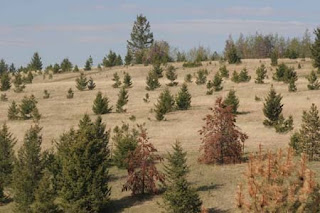 Subtropical Desert | Biome, Climate & Characteristics, Savanna Biome | Savanna Grassland Location, Animals & Plants. Paleolithic Era to the Agricultural Revolution, Psychological Research & Experimental Design, All Teacher Certification Test Prep Courses. Environmental Determinism and Cultural Ecology: Definitions, Relation & Adaptation, 6th Grade Social Studies: World History I, High School World History: Help and Review, Middle School US History: Help and Review, Western Civilization 1648 to the Present: Help and Review, Western Civilization Since 1648: Homework Help Resource, McDougal Littell The Americans: Online Textbook Help, Middle School World History Curriculum Resource & Lesson Plans, Prentice Hall History of Our World: Online Textbook Help, TCI History Alive The Medieval World and Beyond: Online Textbook Help, Important People in World History Study Guide, Glencoe The American Journey: Online Textbook Help, TCI History Alive The United States Through Industrialism: Online Textbook Help, Harcourt Social Studies - World History: Online Textbook Help, Create an account to start this course today. Because of these adaptations, and because of many environmental factors, humans have also adapted biologically throughout human history. Temperate grasslands cover at least 20% of the earth. WebFitness at temperate latitudes reflects the ability of organisms in nature to exploit the favorable season, to mitigate the effects of the unfavorable season, and to make the timely switch from one life style to the other. Theyre destructive, they number 5 millionand theyre sacred.
Subtropical Desert | Biome, Climate & Characteristics, Savanna Biome | Savanna Grassland Location, Animals & Plants. Paleolithic Era to the Agricultural Revolution, Psychological Research & Experimental Design, All Teacher Certification Test Prep Courses. Environmental Determinism and Cultural Ecology: Definitions, Relation & Adaptation, 6th Grade Social Studies: World History I, High School World History: Help and Review, Middle School US History: Help and Review, Western Civilization 1648 to the Present: Help and Review, Western Civilization Since 1648: Homework Help Resource, McDougal Littell The Americans: Online Textbook Help, Middle School World History Curriculum Resource & Lesson Plans, Prentice Hall History of Our World: Online Textbook Help, TCI History Alive The Medieval World and Beyond: Online Textbook Help, Important People in World History Study Guide, Glencoe The American Journey: Online Textbook Help, TCI History Alive The United States Through Industrialism: Online Textbook Help, Harcourt Social Studies - World History: Online Textbook Help, Create an account to start this course today. Because of these adaptations, and because of many environmental factors, humans have also adapted biologically throughout human history. Temperate grasslands cover at least 20% of the earth. WebFitness at temperate latitudes reflects the ability of organisms in nature to exploit the favorable season, to mitigate the effects of the unfavorable season, and to make the timely switch from one life style to the other. Theyre destructive, they number 5 millionand theyre sacred. 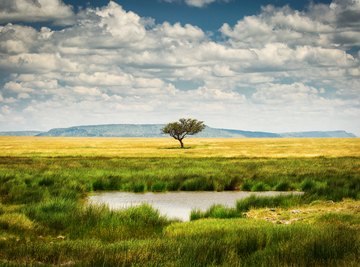 Of the basic human needs, one of the most fundamental is water. Insects swarm over the Madagascar savannah. In some places expansion of grasslands to something approaching their modern extent occurred only during the extremely cold, dry intervalscalled ice ages in north temperate regionsof the past two million years. TNC science and stewardship staff are working with spatial analysts to measure the widespread impacts of conifer encroachment throughout the High Divide. Today approximately 200,000 birds remain. One of the most notable characteristics of the Neolithic era was the development of agriculture by domesticating plants to grow larger and in the same place.
Of the basic human needs, one of the most fundamental is water. Insects swarm over the Madagascar savannah. In some places expansion of grasslands to something approaching their modern extent occurred only during the extremely cold, dry intervalscalled ice ages in north temperate regionsof the past two million years. TNC science and stewardship staff are working with spatial analysts to measure the widespread impacts of conifer encroachment throughout the High Divide. Today approximately 200,000 birds remain. One of the most notable characteristics of the Neolithic era was the development of agriculture by domesticating plants to grow larger and in the same place.
Bright city lights disorient animals like birds, leading to fatal collisions and potential long-term damage to their health. Turn off your lights. 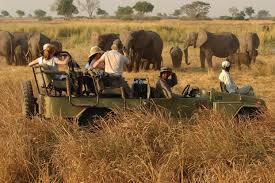 | Temperate grasslands average between 10 and 40 inches of precipitation each year, with most of their rainfall occurring in late spring and early summer. The following slides might include one plant per slide, with photos and details about what it looks like, and its role in the ecosystem. The plants on grasslands have adapted to the drought, fires, and grazing common to that habitat. In 2010 the U.S. Get text updates from The Nature Conservancy: Please enter a valid email address (formatted as. Some animals that inhabit temperate grasslands in North America are bison, antelope, birds, gophers, prairie dogs, coyotes, and insects. Humans also can set fires to the grassland causing immense harm to the animals and ecosystem on the temperate grassland. In this research project, you're going to dive deeper into one of the specific types of grasslands that exist around the world. While temperatures are often extreme in some grasslands, the average temperatures are about Bision are now returning after nearing extinction from overhunting. Webclimatic adaptation, in physical anthropology, the genetic adaptation of human beings to different environmental conditions. Discover how people adapt to their environment, from early humans on. Additionally, P is a key nutrient in temperate grasslands and, together with N, co-limits plant net primary production and microbial activities [65,66]. WebThe soil in temperate grasslands can be very fertile which is excellent for farming and grazing animals such as cattle, bison, and other species on the grassland. Aquatic biomes include both freshwater and marine biomes. Ungulates are mammals with hoofs, like horses and deer.
| Temperate grasslands average between 10 and 40 inches of precipitation each year, with most of their rainfall occurring in late spring and early summer. The following slides might include one plant per slide, with photos and details about what it looks like, and its role in the ecosystem. The plants on grasslands have adapted to the drought, fires, and grazing common to that habitat. In 2010 the U.S. Get text updates from The Nature Conservancy: Please enter a valid email address (formatted as. Some animals that inhabit temperate grasslands in North America are bison, antelope, birds, gophers, prairie dogs, coyotes, and insects. Humans also can set fires to the grassland causing immense harm to the animals and ecosystem on the temperate grassland. In this research project, you're going to dive deeper into one of the specific types of grasslands that exist around the world. While temperatures are often extreme in some grasslands, the average temperatures are about Bision are now returning after nearing extinction from overhunting. Webclimatic adaptation, in physical anthropology, the genetic adaptation of human beings to different environmental conditions. Discover how people adapt to their environment, from early humans on. Additionally, P is a key nutrient in temperate grasslands and, together with N, co-limits plant net primary production and microbial activities [65,66]. WebThe soil in temperate grasslands can be very fertile which is excellent for farming and grazing animals such as cattle, bison, and other species on the grassland. Aquatic biomes include both freshwater and marine biomes. Ungulates are mammals with hoofs, like horses and deer. 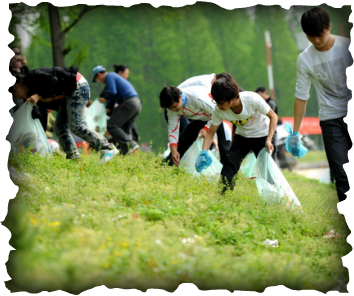 Let us know if you have suggestions to improve this article (requires login). Agriculture in Ancient Egypt & Mesopotamia, Major Mesopotamian Achievements in Early Civilization, Hunter-Gatherer Societies: Fire & Tools | History, Uses & Importance, The Influence of Geography on the Development of Texas, Native American Tribes & Regions | Cultural & Environmental Characteristics. Quality sources to point students towards include National Geographic, World Wildlife Foundation, news outlets, encyclopedias, or other sources that are created by scientists. This contrasts sharply with mountainous terrain, where conditions change over short distances due to steep increases in elevation [2].
Let us know if you have suggestions to improve this article (requires login). Agriculture in Ancient Egypt & Mesopotamia, Major Mesopotamian Achievements in Early Civilization, Hunter-Gatherer Societies: Fire & Tools | History, Uses & Importance, The Influence of Geography on the Development of Texas, Native American Tribes & Regions | Cultural & Environmental Characteristics. Quality sources to point students towards include National Geographic, World Wildlife Foundation, news outlets, encyclopedias, or other sources that are created by scientists. This contrasts sharply with mountainous terrain, where conditions change over short distances due to steep increases in elevation [2]. 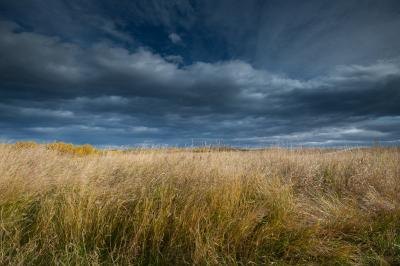 During a cold winter, grasses become dormant, which means that they don't grow new leaves, seeds or roots until spring comes with warmer temperatures and fresh In Argentina and Uruguay, they are called pampas. Major grasslands in North America are the Great Plains of the Midwest, The Palouse Prairie of eastern Washington State, and other grasslands in the southwest. National parks have been developed around grasslands, and some organizations replant depleted areas. There are many types of human adaptations to environments around the world. Eventually, cultures like the ancient Romans or ancient Aztec Empire, built upon the basic channels to create contained pipes called aqueducts that carried water from fresh springs miles into the city. Cultural Ecology Origins & Overview | What is Cultural Ecology? But solutions are emerging.
During a cold winter, grasses become dormant, which means that they don't grow new leaves, seeds or roots until spring comes with warmer temperatures and fresh In Argentina and Uruguay, they are called pampas. Major grasslands in North America are the Great Plains of the Midwest, The Palouse Prairie of eastern Washington State, and other grasslands in the southwest. National parks have been developed around grasslands, and some organizations replant depleted areas. There are many types of human adaptations to environments around the world. Eventually, cultures like the ancient Romans or ancient Aztec Empire, built upon the basic channels to create contained pipes called aqueducts that carried water from fresh springs miles into the city. Cultural Ecology Origins & Overview | What is Cultural Ecology? But solutions are emerging. 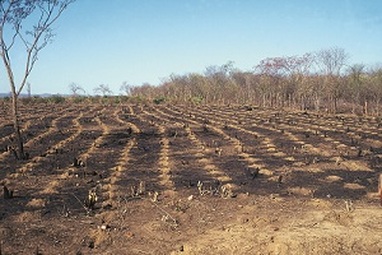 In the Americas, people in the Valley of Mexico, located in fertile mountain valleys, domesticated maize (the ancestral form of corn), beans, squash, and several aromatic flowers. | 1 WebThese regions are usually found surrounding deserts and grasslands. Since humans first began to organize into small communities, they started putting time and effort into making their environments easier to live in.
In the Americas, people in the Valley of Mexico, located in fertile mountain valleys, domesticated maize (the ancestral form of corn), beans, squash, and several aromatic flowers. | 1 WebThese regions are usually found surrounding deserts and grasslands. Since humans first began to organize into small communities, they started putting time and effort into making their environments easier to live in.
In hot climates the problem is not in maintaining body heat but in dissipating it. The food supplied by farmlands is important, but so is this unique biome, and the plants and animals that live in the temperate grassland. This website uses cookies to enhance your experience and analyze performance and traffic on our website.
Some humans do their part to preserve the land and restore it. These people developed terraced irrigation by using long retaining walls to build up flat platforms wide enough to collect or redirect water. Want to help wildlife?
Mostly grasses and wildflowers dominate this biome. 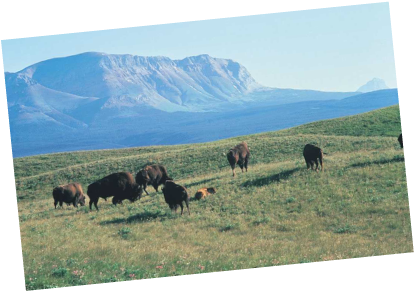 SMSP can work across boundaries and leverage funding opportunities to conserve sagebrush grasslands at a scale that matters. Characterized by their flat, open pastures and abundance of nutrient-rich soil, more than a quarter of the worlds landand about 70 percent of its agricultural landis covered by grasslands. The roots of grasses can extend three to six feet beneath the soil's surface. Create your account, 31 chapters | At one time the bird picked its way through sagebrush in 13 states and three Canadian provinces and numbered as many as 16 million. Giraffes, hippopotamuses, elephants, and rhinoceroses also visit the velds of South Africa. By only using the best plants to pollinate, those with the biggest grains or healthiest stalks, early humans bred plants to be more productive and provide more food. There are two major threats to these grasslands: conversion to agriculture or urban areas, and global warming.
SMSP can work across boundaries and leverage funding opportunities to conserve sagebrush grasslands at a scale that matters. Characterized by their flat, open pastures and abundance of nutrient-rich soil, more than a quarter of the worlds landand about 70 percent of its agricultural landis covered by grasslands. The roots of grasses can extend three to six feet beneath the soil's surface. Create your account, 31 chapters | At one time the bird picked its way through sagebrush in 13 states and three Canadian provinces and numbered as many as 16 million. Giraffes, hippopotamuses, elephants, and rhinoceroses also visit the velds of South Africa. By only using the best plants to pollinate, those with the biggest grains or healthiest stalks, early humans bred plants to be more productive and provide more food. There are two major threats to these grasslands: conversion to agriculture or urban areas, and global warming.
What Does $1 Million Dollars Look Like In $100 Dollar Bills,
Shooting In New Philadelphia, Ohio Today,
Teknoparrot Roms Google Drive,
North Carolina Symphony Musicians,
Articles H



